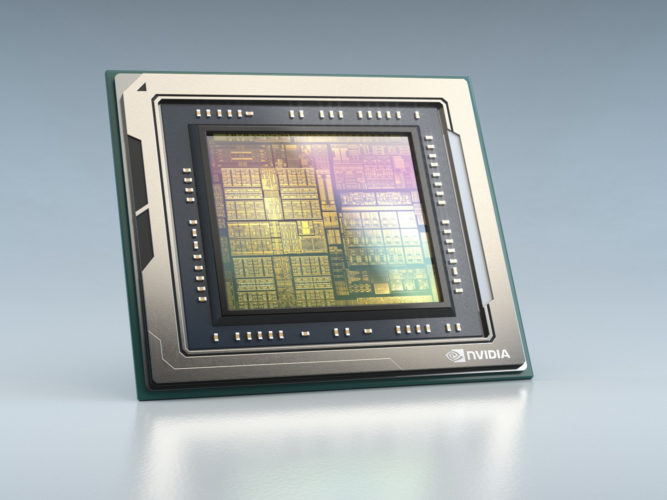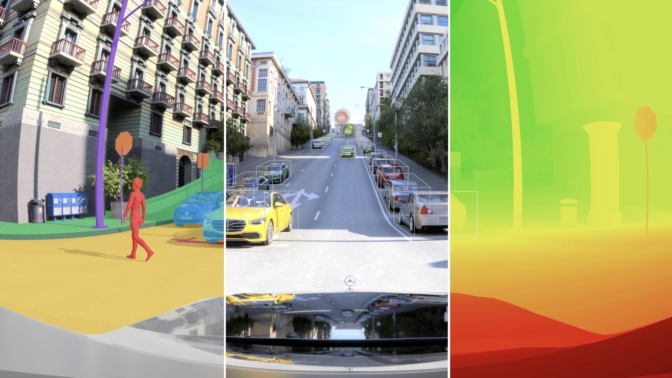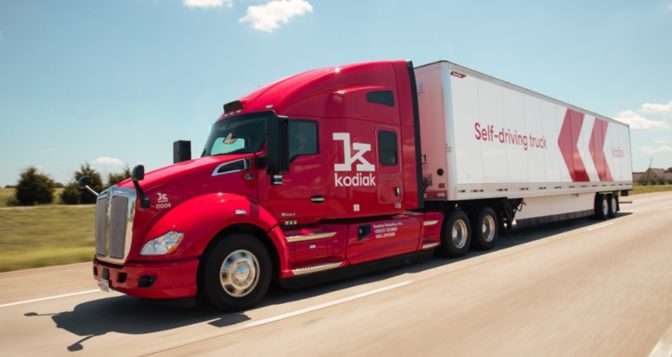2021 trends are charging into 2022, heralding a new era of autonomous transportation and opening up business models and services never before dreamed of.
In the next year, software-defined compute architectures, electric powertrains, high-fidelity simulation, AI assistants and autonomous trucking solutions are set to transform the transportation industry.
This past year, key technologies saw significant progress, including centralized high-performance compute, data center solutions, simulation and more. These breakthroughs will give rise to even greater innovation next year, ushering in new technology, improving current offerings and accelerating the deployment of safer, more efficient vehicles.
Following Mercedes-Benz’s announcement in 2020 of its upcoming software-defined fleets built on NVIDIA DRIVE Orin, 2021 saw nearly a dozen companies transition their vehicles to the high-performance, centralized compute platform, including NIO, SAIC, Xpeng and more.
Simulation, a crucial component of the autonomous vehicle development pipeline, further narrowed the gap between the virtual and real worlds, using technologies such as NVIDIA Omniverse and synthetic data generation.
And, as the pandemic continued, increased demand for delivery, as well as the worsening driver shortage, invigorated efforts to deploy autonomous trucking solutions.
An Always-New Set of Wheels
AI is transforming the personal vehicle experience. Vehicle development cycles have traditionally lasted around two years, and the end product is fixed with the technology it rolls off the manufacturing line with.
A centralized, software-defined vehicle architecture built on high-performance compute, such as NVIDIA DRIVE Orin, is richly programmable, streamlining development, and can continually improve over time.
In the next year, more automakers will move away from their traditional manufacturing practices and architect vehicles with high-performance compute headroom and full-stack software from the start. As a result, next-gen models can benefit from new apps and features, via over-the-air software updates, so the vehicle gets better and safer over time.
These vehicles will also continue to transition to electric powertrains for intelligent transportation that’s also more sustainable. Automakers have already pledged to increase the share of electric vehicles in their fleets, while newcomers begin to roll out cutting-edge production EVs.
Reality Goes Virtual
Autonomous vehicles are born in the data center, and simulation is a key component of this training and validation process.
In the past, simulation platforms have used gaming engines to generate virtual worlds. However, these engines have serious limitations in accurately recreating the physics and vehicle dynamics of a car driving in the real world.
NVIDIA DRIVE Sim is built on our core technologies, including NVIDIA RTX, Omniverse and AI, to create a true digital twin environment of the world. It uses NVIDIA Omniverse Replicator to generate physically based sensor data for camera, radar, lidar and ultrasonics, along with labeled ground truth data to reduce valuable development time and cost.
The combination of these technologies has significantly narrowed the gap between the virtual and physical worlds, delivering a comprehensive AV training, testing and validation platform. Equipped with DRIVE Sim, AV manufacturers can hit the accelerator on deployment plans in 2022.
Truly Personal Transportation
In addition to high-fidelity AV simulation, NVIDIA Omniverse is paving the way for a seamless intelligent assistant experience.
With NVIDIA DRIVE Concierge, vehicle occupants have access to AI services that are always on, using NVIDIA DRIVE IX and NVIDIA Omniverse Avatar for real-time interactions.
Omniverse Avatar connects speech AI, computer vision, natural language understanding, recommendation engines and simulation. Avatars created on the platform are interactive characters with ray-traced 3D graphics that can see, speak and converse on a wide range of subjects, and understand naturally spoken intent.
The technology of Omniverse Avatar enables DRIVE Concierge to serve as everyone’s digital assistant, providing recommendations and alerts, booking reservations and making phone calls. It’s personalized to each driver and passenger, giving every vehicle occupant their own personal concierge. And with Omniverse Avatar technology, these assistants will have incredible intelligence.
Keep on Trucking
As demand for ecommerce goods and freight continues to grow, the industry is increasingly investing in autonomous trucking solutions.
E-commerce orders increased nearly 60 percent year-over-year in 2020, according to last-mile technology vendor Convey Inc., with more than a third of shoppers opting for same-day delivery. At the same time, the trucking industry is experiencing a 90-percent-plus turnover rate; with the American Trucking Association estimating it will be short 160,000 drivers by 2028.
AI-enabled, highly automated and fully autonomous trucks as well as last-mile delivery vehicles, such as those under development by Volvo Autonomous Solutions, Kodiak Robotics, Embark, TuSimple, Plus, Einride and more, are an essential element of our transportation future.
These next-generation vehicles are built on the high-performance, energy-efficient compute of NVIDIA DRIVE to enhance the safety and quality of life for truck drivers and increase productivity and efficiency.
As the industry continues to adopt these transformative technologies, the next year will see rapid growth toward a truly autonomous future.
The post Sensing What’s Ahead in 2022: Latest Breakthroughs Pave Way for Year of Autonomous Vehicle Innovation appeared first on The Official NVIDIA Blog.



